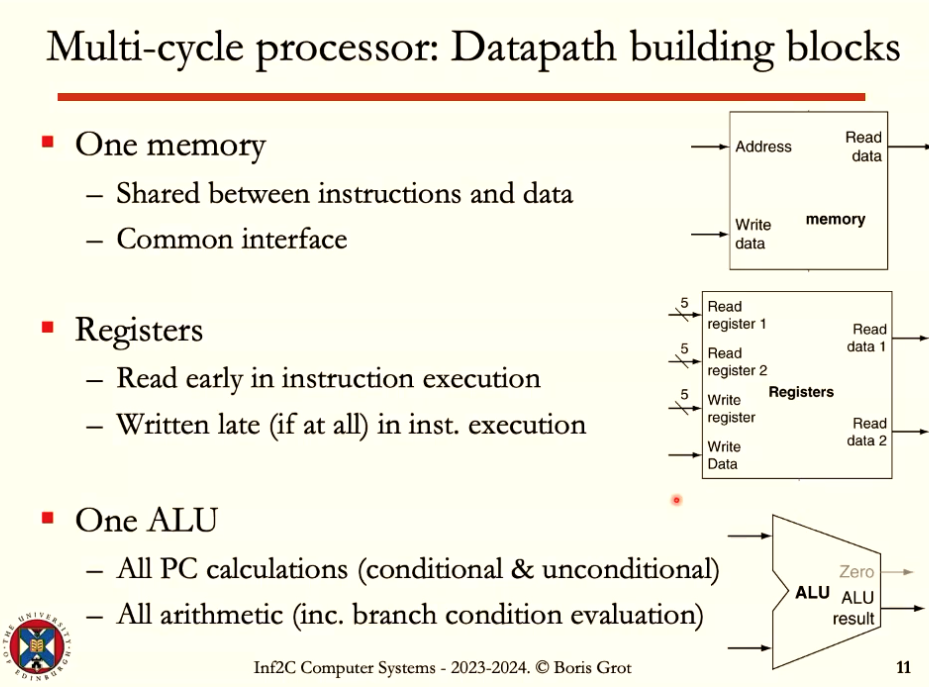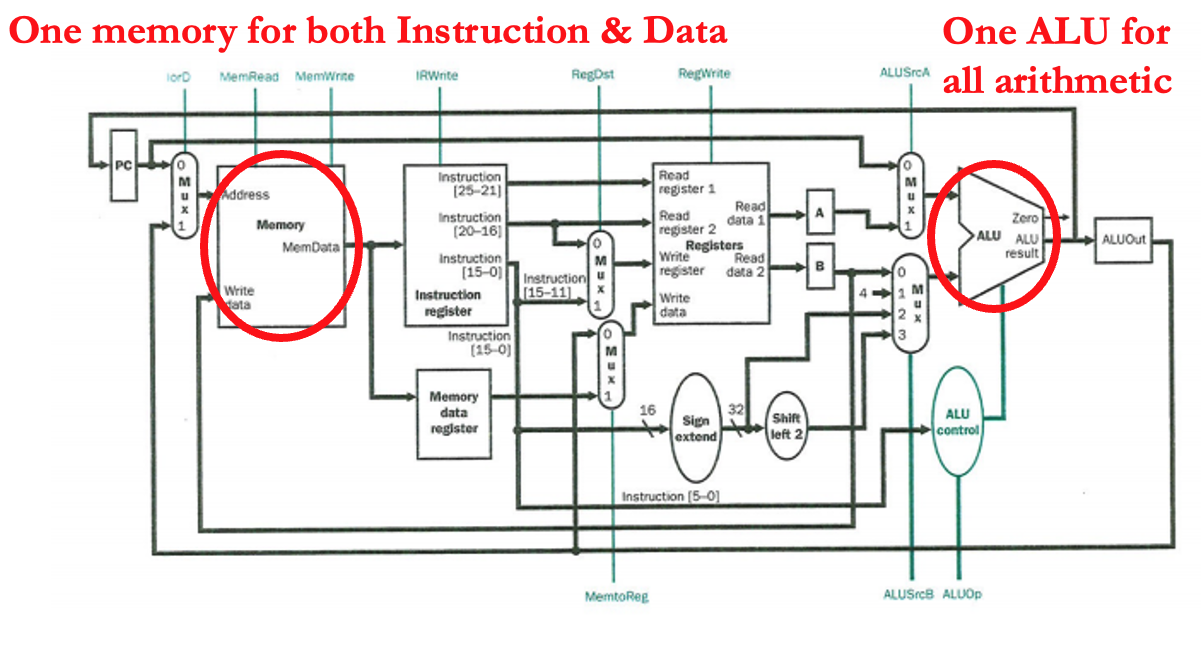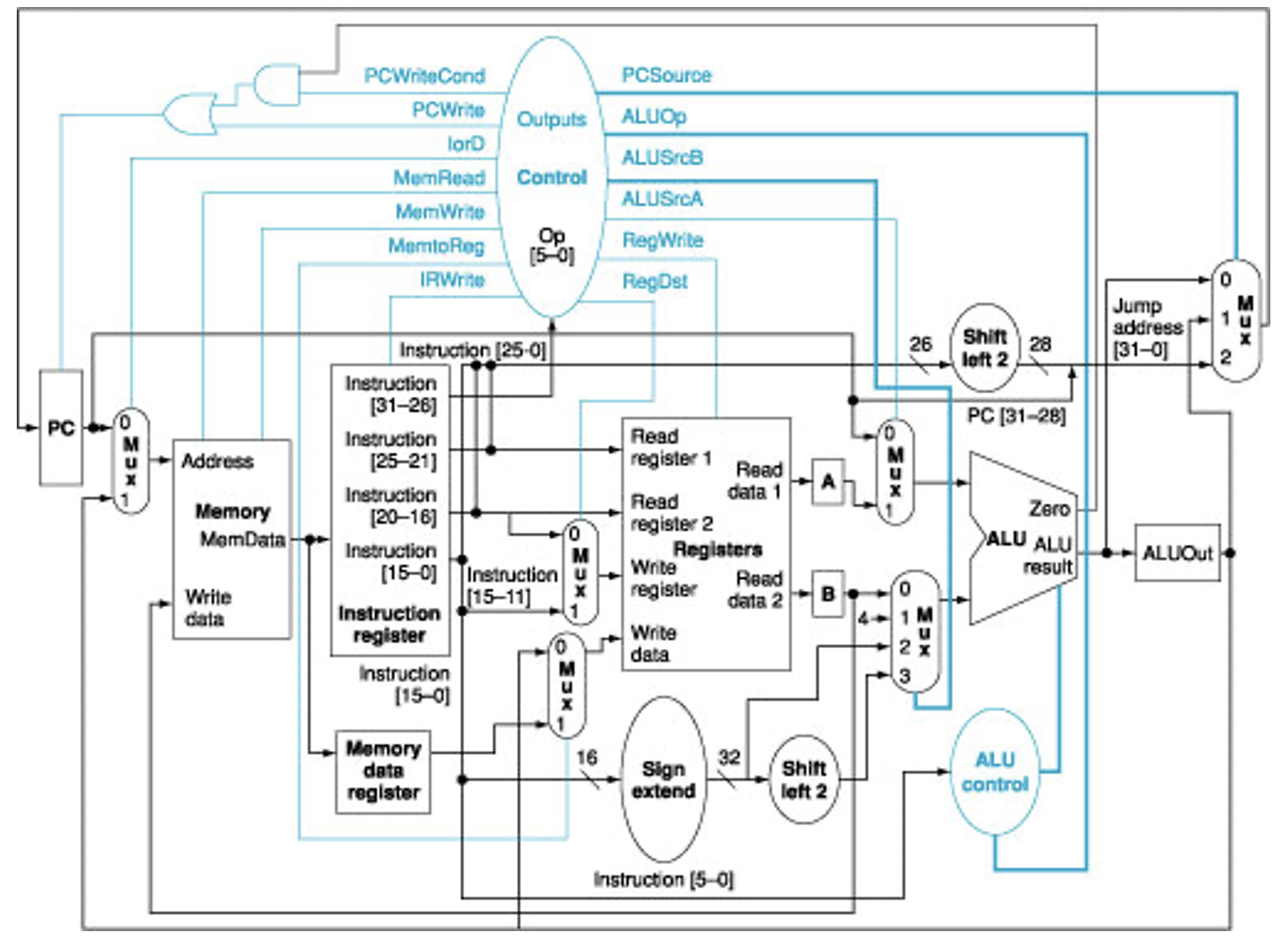The Difference, Simply:
Single-Cycle Processors, recapped:
Every instruction in a single-cycle processors is intended to run on a single clock cycle. The problem is some instructions run through a lot more gates than others. Thus, the cycle speed must be as slow as the slowest instruction (bad). They’re incredibly (relatively speaking) simple however.
Multi-Cycle Processors on the other hand:
Instructions on this type of processor can take multiple clock cycles. This way instructions will never take more time than necessary. MCP’s only use a single ALU, before there were 2 (one for actual adding and another for updating PC).

Multi-Cycle Processor - In Depth:


Quirk of MCP
You’re reading 2 registers (A and B in diagram) even if you don’t need to.
jumpfor example only needs a single address.
Control Signals:
1 bit binary signals fed into the Control Unit so it can decide what do do next.
Fetch-Decode-Execute Cycle Example:
(The ⇐ means the thing on the left is set to the thing on the right at the end of a clock cycle)
-
Instruction fetch
IR < = Mem[PC]
PC < = PC+4 -
Instruction decode and register read
A < = Reg[IR[25:21]]
B < = Reg[IR[20:16]]
ALUOut < = PC+sgnext(IR[15:0]<<2)
3a. R-type arithmetic/logical instruction
ALUOut < = A op B
3b. Immediate arithmetic, including memory address generation
ALUOut < = A + sgnext(IR[15:0])
3c. Branch completion
if (A = = B) PC < = ALUOut
3d. Jump completion
PC < = {PC[31:28],IR[25:0],2’b00}
4a. R-type arithmetic-logical instruction completion
Reg[IR[15:11]] < = ALUOut
4b. Memory access (load)
MDR < = Mem[ALUOut]
4c. Memory access (store) & completion
Mem[ALUOut] < = B
- Load Instruction Completion
`Red[IR[20:16]] < = MDR